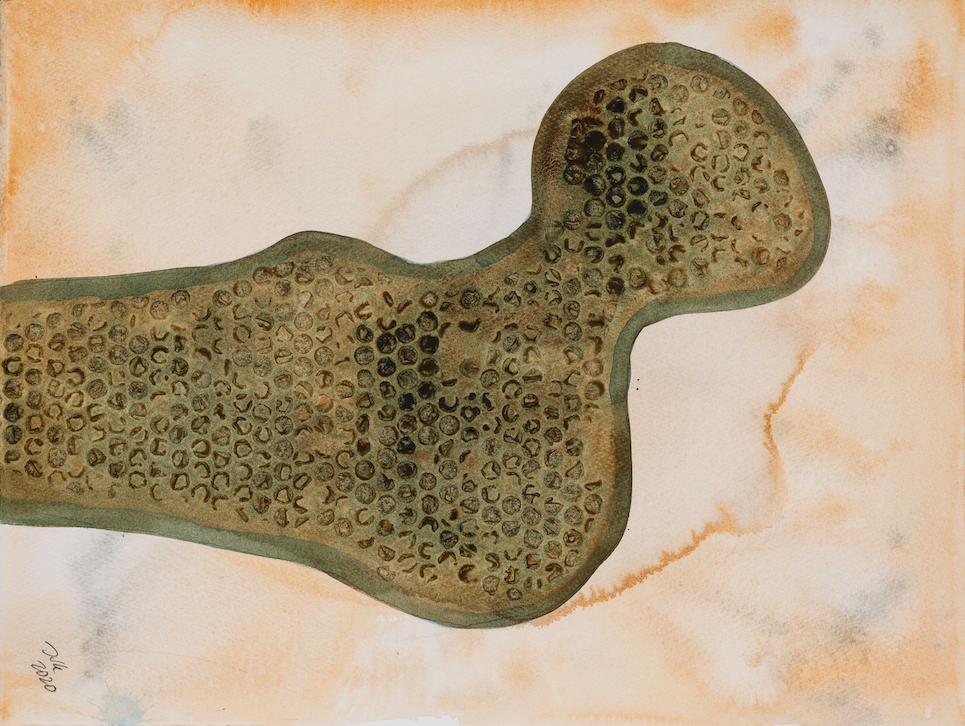Publications
Here is a selection of publications where different laminin isoforms were used to create more authentic cell culture systems.
Regenerating airway epithelium using fibrous biomimetic basement membranes
Dina Gadalla, Yourka D. Tchoukalova & David G. Lott. Journal of Biomedical Materials Research, 2022
This work focuses on the production of fiber layers to support epithelial differentiation, for the overall aim of developing a fibrous scaffold for airway epithelial regenerative implants. The authors show that the functionalization of polycaprolactone-heparin (PCL, a biodegradable polyester) fibers with laminin-332 (Biolaminin 332) -collagen IV mixture promotes higher attachment, quicker migration, and increased proliferation of airway epithelial cells. In addition, gene expression levels of secretory and ciliated cell markers were higher with laminin coating. The findings indicate that laminin-coated electrospun fibers are beneficial for the fabrication of bioengineered functional epithelia.
Laminin 411 mediates endothelial specification via multiple signaling axes that converge on β-catenin
Hall M.L., Givens S., Santosh N., Iacovino M., Kyba M. & Ogle B.M. Stem Cell Reports, 2022
The authors show that laminin-411 (Biolaminin 411) alone induces endothelial cell differentiation in human and mouse induced pluripotent stem cells over collagen I or Matrigel. Overall, the results indicate that the extracellular matrix contributes to endothelial differentiation through multiple avenues which converge at β-catenin. This protocol is an improvement to previous methods, excluding the use of undefined matrix substances and being less complex in terms of added small-molecule reagents.
Publication: Extracellular matrix-inducing Sox9 promotes both basal progenitor proliferation and gliogenesis in developing neocortex
Güven A et al. 2020 eLife
Laminin-211 (LN211) is shown to increase basal progenitor cell proliferation in the mouse neocortex.
Publication: Single-cell transcriptomics captures features of human midbrain development and dopamine neuron diversity in brain organoids
Fiorenzano et al. 2021 Nature Communications
Biosilk 3D scaffold biofunctionalized with Biolaminin 111 was used to generate mature and functional ventral midbrain (VM) organoids with less variation both between the organoid replicates and within an organoid, when compared with a standard VM-organoid method. This study shows the benefits of Biosilk especially in terms of permeability (no necrotic centers), resulting in improved cell maturity and experimental reproducibility. Biosilk can be supplemented with any Biolaminin isoforms, depending on the tissue type of interest.
Improved erythroid differentiation of multiple human pluripotent stem cell lines in microcarrier culture by modulation of Wnt/β-Catenin signaling
Jaichandran Sivalingam, Hong Yu Chen, Bin-Xia Yang, Zhong Ri Lim, Alan Tin Lun Lam, Tsung Liang Woo, Allen Kuan-Liang Chen, Shaul Reuveny, Yuin-Han Loh, Steve Kah-Weng Oh. Haematologica, 2018
This article describes means to scale up the pluripotent expansion stage by culturing hiPSCs on Biolaminin 521 (LN521)-coated microcarriers (MCs). The protocol allows hiPSC-MC aggregates to efficiently differentiate differentiate as embryoid bodies (EBs) in a scalable manner in suspension culture.
A Scalable Suspension Platform for Generating High-Density Cultures of Universal Red Blood Cells from Human Induced Pluripotent Stem Cells
Jaichandran Sivalingam, Yu SuE, Zhong Ri Lim, Shaul Reuveny, Benoit Malleret, Steve K.W. Oh. Stem Cells Reports, 2020
This article describes a scalable suspension agitation culture platform for the differentiation of human induced pluripotent stem cell-microcarrier aggregates into functional red blood cells. The report describes the cell quantity and quality in culture sizes ranging from 6-well plates to 500 ml spinner flasks, reaching up to 17 million high-quality cells per ml. The process could find applications in future large-scale red blood cell production in controlled bioreactors.
A Hydrogel Platform that Incorporates Laminin Isoforms for Efficient Presentation of Growth Factors – Neural Growth and Osteogenesis
Oana Dobre, Mariana A. G. Oliva, Giuseppe Ciccone, Sara Trujillo, Aleixandre Rodrigo-Navarro, Douglas Cormac Venters, Virginia Llopis-Hernandez, Massimo Vassalli, Cristina Gonzalez-Garcia, Matthew J. Dalby, Manuel Salmeron-Sanchez. Advanced Functional Materials, 2021
The authors report a 3D culture system with a defined matrix composition that reflects the complexity of the native ECM, where growth factors in combination with Biolaminin isoforms give more natural cellular processes. The authors incorporated the full-length Biolaminin 521, 332, and 411 proteins into a synthetic polymer network with controlled physico-chemical properties, and showed examples of hMSC osteogenesis and neurite growth in this 3D microenvironment.
Extracellular Matrix as a Regulator of Epidermal Stem Cell Fate
E. Chermnykh, E. and Kalabusheva, and E. Vorotelyak. Int J Mol Sci, 2018
This article reviews the research conducted on the role of extracellular matrix in regulating epidermal stem cell fate, especially in the hair follicle stem cell niche.
Protocol for automated production of human stem cell derived liver spheres
Jose Meseguer-Ripolles, Alvile Kasarinaite, Baltasar Lucendo-Villarin, David C Hay. STAR Protoc, 2021
In this article, the authors describe how they produce human liver spheres from pluripotent stem cell-derived hepatic progenitors, endothelial cells, and hepatic stellate cells, using LN521 in the differentiation protocol. Their process is automated using liquid handling and pipetting systems, permitting cost-effective scale-up and reducing sphere variability.
Publication: Biosilk with laminin-521 for hPSC neural differentiation in 3D network
Åstrand et al. 2020 Biomaterials Science
This article describes the use of a recombinant spider silk protein functionalized with a cell binding motif from fibronectin in combination with a human recombinant laminin 521 (LN-521) to create a fully defined stem cell niche in 3D. The results show that hPSCs integrated into the foam develop into neural progenitors and that they stay viable during long-term differentiations. The culture system also supports morphogenesis mimicking the human brain development and can serve as base for engineering of hPSC-derived neural tissue. The article describes the 3D culture matrix sold under the name Biosilk®.


